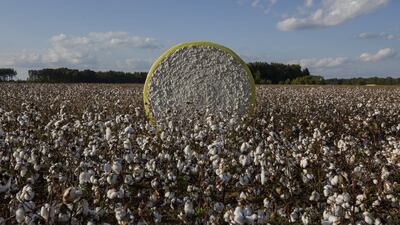Extreme weather is wreaking havoc upon most of the world’s largest cotton suppliers.
In India, the leading producer, heavy rains and pests have cut into cotton crops so much that the nation is importing supplies.
A heatwave in China is raising concerns about the coming harvest there. In the US, the largest exporter of the commodity, a worsening drought is ravaging farms and is set to drag production to the lowest level in more than a decade.
And now Brazil, the second-largest exporter, is battling extreme heat and drought that have cut yields by nearly 30 per cent.
This confluence of extreme weather events brought on by climate change has sent cotton prices soaring by as much as 30 per cent.
Earlier this year, they touched the highest level since 2011, squeezed the margins of clothing suppliers and threatened to raise the costs of everything from T-shirts, to nappies, to paper and cardboard.
In a call with investors last week, Children’s Place chief executive Jane Elfers described the surge in cotton prices as “a huge, huge problem for us” and said the company was hoping for some relief in the second half of the year.
The outlook for Brazil is anything but helpful. The drought there has so far dried up an estimated 200,000 metric tonnes of supply, according to Abrapa, a group representing growers.
With the nation’s 2021-2022 harvest close to complete, production is now estimated at 2.6 million tonnes or less.
Bom Futuro group, one of Brazil’s largest cotton producers accounting for about 10 per cent of the nation’s planted area, said yields fell 27 per cent compared with the previous season.

Julio Busato, a grower in Sao Desiderio, Bahia state, has suffered from a similar decline. Dryness is reducing the number of cotton bolls, making them lighter across all of the country’s main growing regions, he said.
Meanwhile, US output is set to plunge 28 per cent in the season that began this month.
The US expects production to hit the lowest level since the 2009-2010 season, sending stockpiles to near-historic lows, because of a drought that has become so extreme that the US government is rationing water from the Colorado River.
Together, the US and Brazil account for half of the world’s cotton exports.
The decline in global supplies has become so steep that it is overshadowing demand problems.
The US government and analysts have been projecting a drop in demand because of a fall in clothing purchases and slowing economies, especially in Europe and Asia.
And yet all signs point to “much higher” cotton prices in the coming months with crops shrinking, said Andy Ryan, senior relationship manager for Hedgepoint Global Markets in Nashville, Tennessee.
Mr Busato, who also serves as the head of Abrapa, sold 75 per cent of what he expected to harvest in advance and ended up largely missing out on the big surge in prices.
Because of the weather, he only produced enough to meet his existing contractual obligations.
“I could have made a mountain of money,” he said.
The weather has created a secondary headache for the cotton buyers of the world.
Untimely rains in regions including Australia, Pakistan and even Brazil have also diminished the quality of the stock, said Peter Egli, director for Plexus Cotton.

